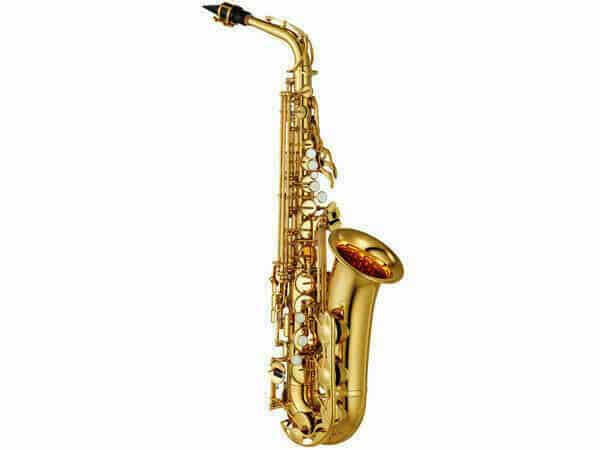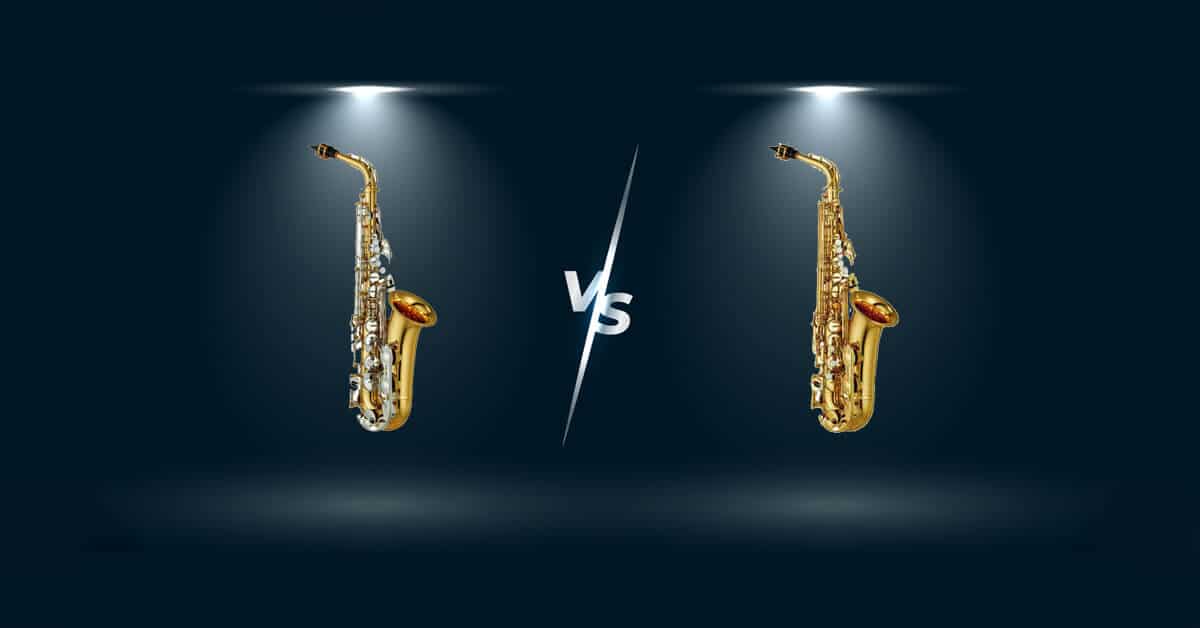If you’re stuck choosing between the Yamaha Yas 26 vs. Yas 280, we’ve all been there. The two are very solid student saxophone choices. Still, some differences between the two can make one or the other more suitable for you.
In this article, we’ll draw a comparison between the two options to help you finalize your decision.
Table of Contents
Why You Should Trust Us
With plenty of years practicing the saxophone and trying out many, we have a lot of experience under our belt.
Our passion, just like our reviews, extend beyond just the horn and all the way to the accessories and add-ons. Having reviewed dozens of horns so far, tried out double that number, and read about hundreds, there’s no stone left unturned.
Based on this, we’ve made a distinction based on the fine line that separates the YAS-26 from the YAS-280.
Yamaha YAS 26 vs. YAS 280 In a Glimpse
The Yamaha YAS-26 is one of the best beginner alto saxophones someone can start with, while the YAS-280 is two models up. This means that the latter is still suitable for beginners, but might be the slightest bit harder to tackle in terms of playability.
In other words, if you’re set on your saxophone journey in the long term, the YAS-280 would be a better choice. However, if you’re only experimenting or want a horn that would last only a few years when you’ll be playing in a band, you can opt for the more affordable YAS-26.
| Image | Product | Details | Price |
|---|---|---|---|
 |
Yamaha Yas 26 | Better for Beginners | Check Price |
 |
Yamaha Yas 280 | Better for the Long-term | Check Price |
The Full Comparison
Now let’s delve further into the details that distinguish these two models from one another.
Design and Construction
The build quality of the YAS-26 is reliable and sturdy, which combines well with its lightweight design at 11.5 pounds. In fact, this combination is an excellent deal for a student model. The horn has a yellow brass body, keys, bell and neck.
What’s more, the adjustable thumb rest and drawn tone holes are nice additions that make the horn easier to play. Needless to say, these two features are a mark of an instrument of good construction. And if we’re talking upgrades, the YAS-26 accommodates all the Yamaha necks, which is a huge pro for advancing students.
Not only that, but it also has waterproof leather pads that are durable and easy to maintain. Mix that with the durable nickel plating and a gold lacquer finish and you get a tough horn overall. And to add a touch to aesthetics, it comes with stamped bell engraving.
Related:
– YAS 62 vs YAS 480
– The Top Alto Saxophones on The Market for This Year
– YAS 26 vs YAS 23 Full Comparison
On the other hand, the YAS-280 is slightly heavier at 13.2 pounds. Its bell is mounted with screws, just like the YAS-26, and the neck receiver is built for durability. It comes with no engravings, but apart from that, everything is quite similar to the YAS-26.
Both instruments come with polyester keys, which aren’t as satisfactory as the mother of pearl alternative found on other options. And while it might seem alright for the YAS-26, it seems like a missing feature on the YAS-280.
- Winner: Yamaha YAS-26
Handling and Playability
There’s no doubt that the Yamaha YAS-26’s ergonomics are one of its strongest suits given that it’s an improved version of the YAS-23. The feel of the keys is smooth with even tension and response, while the pads are leveled well. Also, the neck receiver is redesigned to quicken the response of the instrument and make it more playable.
Both the YAS-26 and YAS-280 come with a rolling C# to low B feature, which allows the player to press both keys simultaneously, enabling faster and easier playing.
So, the YAS-280 would be the ideal choice if you want the high F# key and are willing to invest some more money in your horn.
- Winner: Yamaha YAS-280
Sound
Despite being a beginner student sax, the YAS-26 produces rich tones with excellent response, tone, and intonation. Nothing less than what you would expect from a Yamaha horn.
A huge part of why the sound is clear and crisp is the low B-C# rolling mechanism, which gives players more control over the low register. Mix hat with the neck receiver and mechanics and you’ll get a horn that plays great for beginners and just as well for intermediate players.
On the other hand, the Yamaha YAS-280 produces slightly better sounds than the YAS-26. The post-to-body construction instead of the ribbed one means that each post is soldered onto the body individually, and there’s a body-to-bell brace.
Add to that, adjustment screws that facilitate pair adjustments, stainless-steel springs for keys to snap back smoothly, and tight mechanisms, and it would make sense why it’s such an integrated pick.
- Winner: Yamaha YAS-280
Pros and Cons In a Nutshell
Yamaha YAS-26
Pros
- Great mechanics and key connections
- Produces a rich tone
- Excellent design and construction
- Easier handling with an adjustable thumb hook
- Comes with needed accessories and a case
Cons
- Manufactured in China or Indonesia
- Mouthpiece is subpar
Yamaha YAS-280
Pros
- Case comes with zippable straps to be carried as a backpack
- Amazing sound
- Plays incredibly right out of the box
Cons
- Polyester key buttons
- A little pricey for a Chinese- or Indonesian-manufactured saxophone
Conclusion
At face value, there might not seem that many differences between the two horns other than the obvious price. Yet, a closer look will reveal some differences in the construction and mechanics that can help you make your choice.
Namely, the high F# key, which does wonders to the playability of the instrument and definitely enables it to trump the YAS-26. This is why the YAS-280 is a better choice for seasoned saxophonists, while the YAS-26 suits novices and beginners more.



